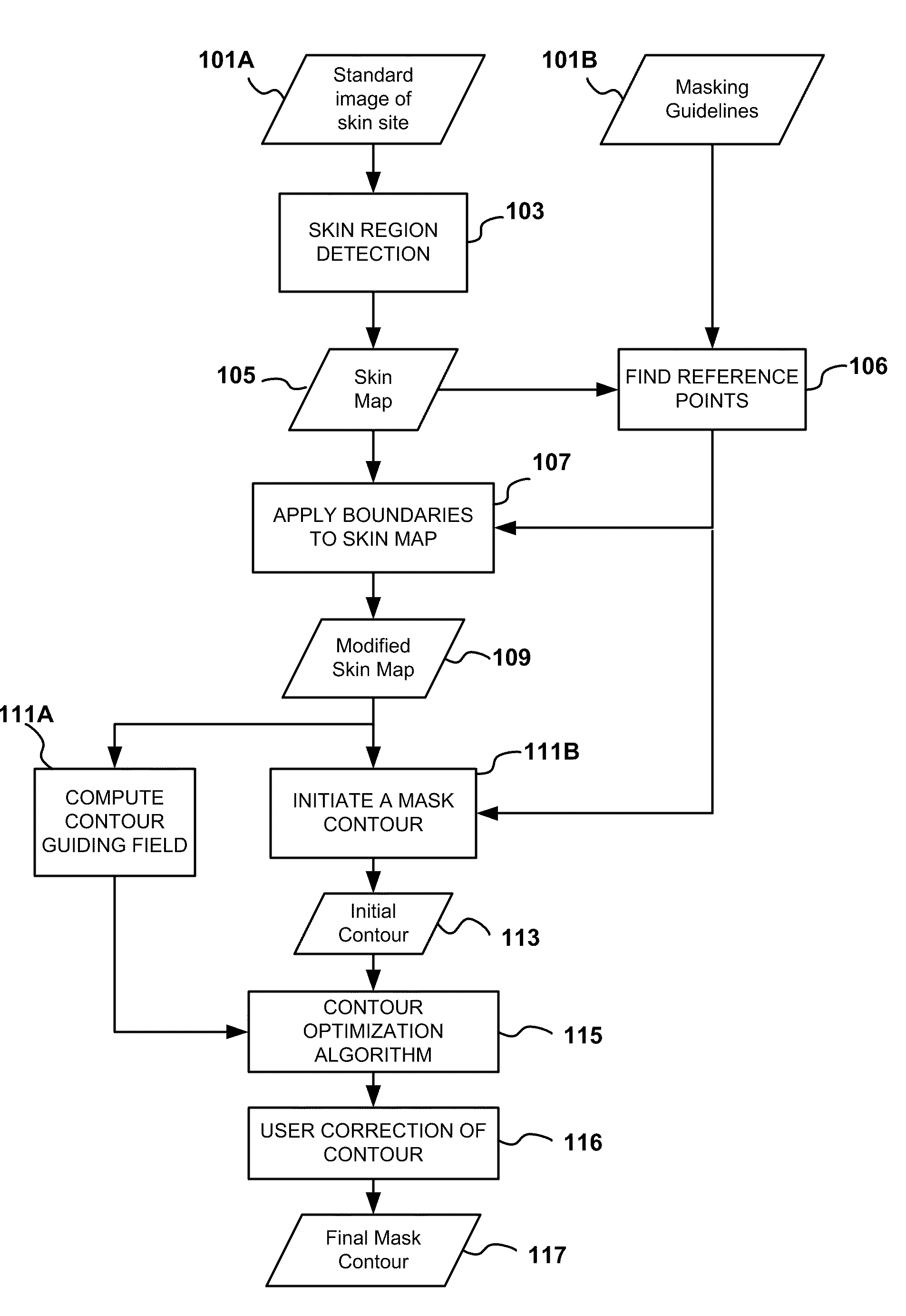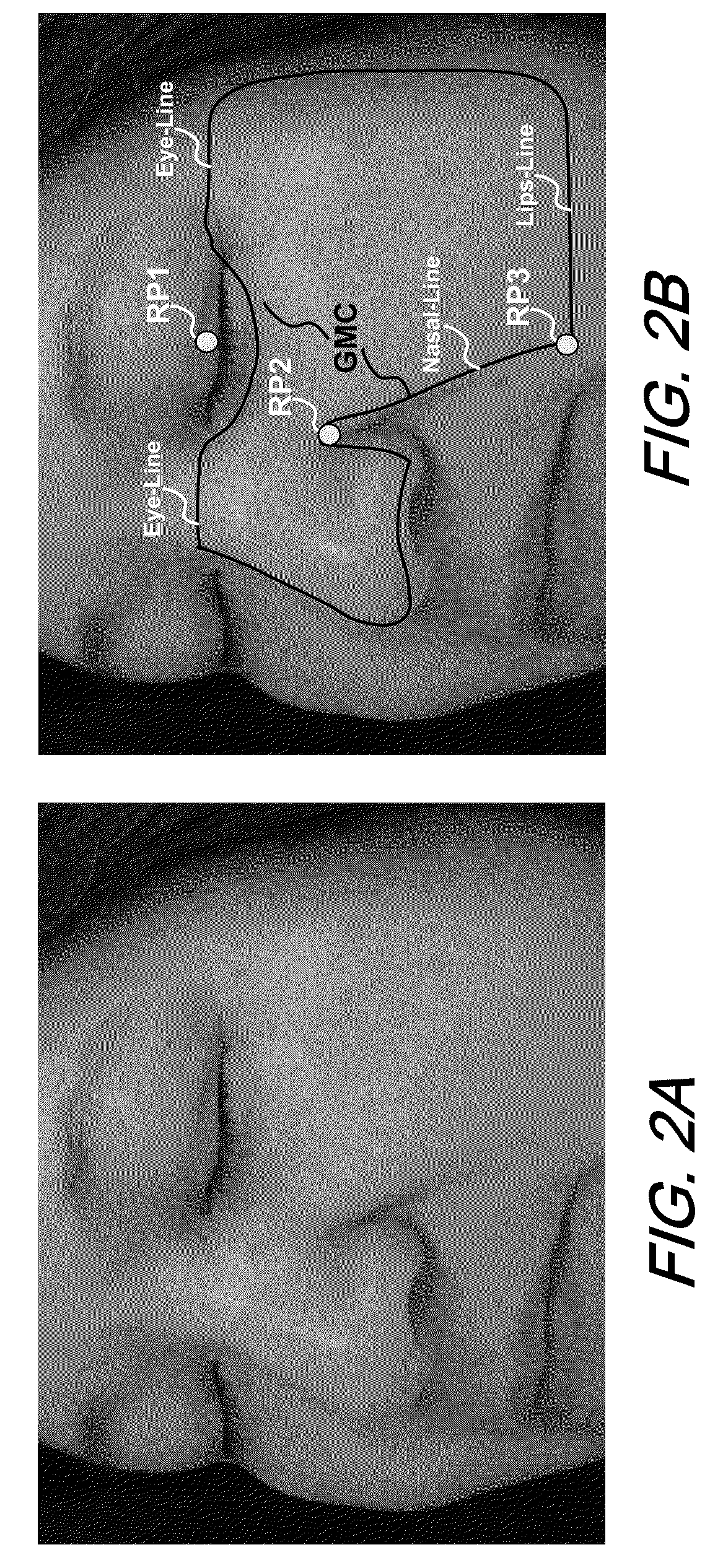Automatic mask design and registration and feature detection for computer-aided skin analysis
a skin analysis and automatic technology, applied in the field of computer-aided skin analysis, can solve the problems of limited work done in the design of skin masks, prone to user errors and inconsistencies in masks, and focused user interaction
- Summary
- Abstract
- Description
- Claims
- Application Information
AI Technical Summary
Benefits of technology
Problems solved by technology
Method used
Image
Examples
Embodiment Construction
[0045]FIG. 1 is a high-level flowchart illustrating an exemplary embodiment of a method of generating a mask for an image of a skin site in accordance with the present invention. The method takes as an input a close-up image 101A of a known skin site (e.g., cheek, forehead, chest etc.) preferably captured under standardized and reproducible illumination and pose conditions. In order to provide standardized and reproducible illumination conditions, the image 101A is preferably captured with an automated and controlled skin image capture system, such as the VISIA Complexion Analysis System for facial skin analysis (hereafter referred to as VISIA) available from Canfield Scientific, Inc. For skin images involving other body parts, either an open-field or closed-field image capture system can be used in which a camera is placed in a fixed position and orientation relative to the subject while the subject is positioned in a standard manner. FIG. 2A shows an illustrative skin site image c...
PUM
 Login to View More
Login to View More Abstract
Description
Claims
Application Information
 Login to View More
Login to View More - R&D
- Intellectual Property
- Life Sciences
- Materials
- Tech Scout
- Unparalleled Data Quality
- Higher Quality Content
- 60% Fewer Hallucinations
Browse by: Latest US Patents, China's latest patents, Technical Efficacy Thesaurus, Application Domain, Technology Topic, Popular Technical Reports.
© 2025 PatSnap. All rights reserved.Legal|Privacy policy|Modern Slavery Act Transparency Statement|Sitemap|About US| Contact US: help@patsnap.com



